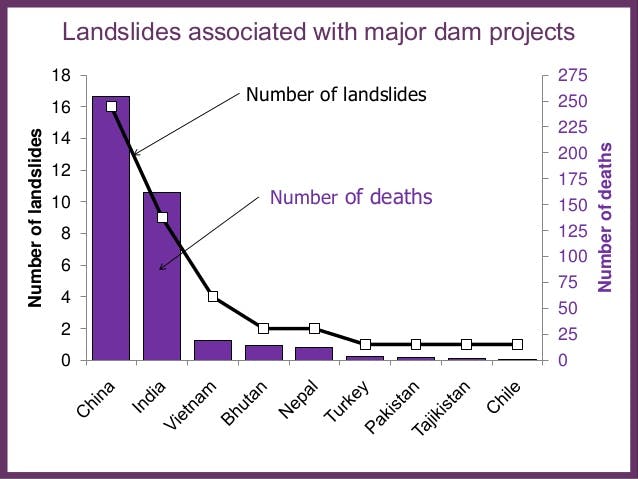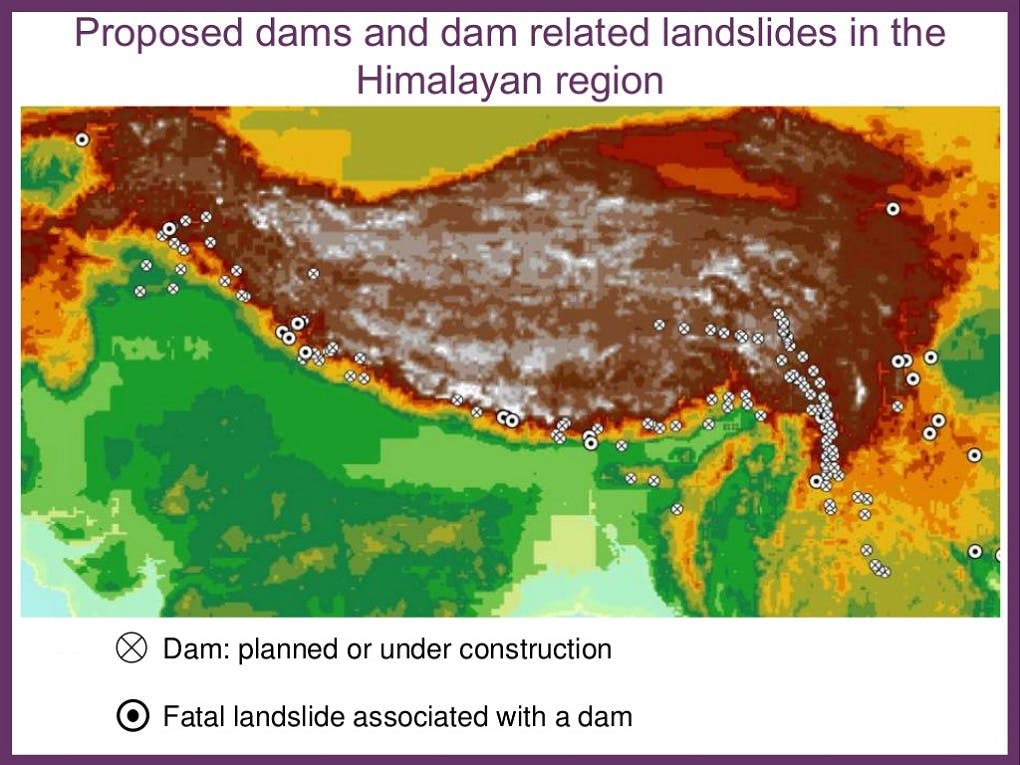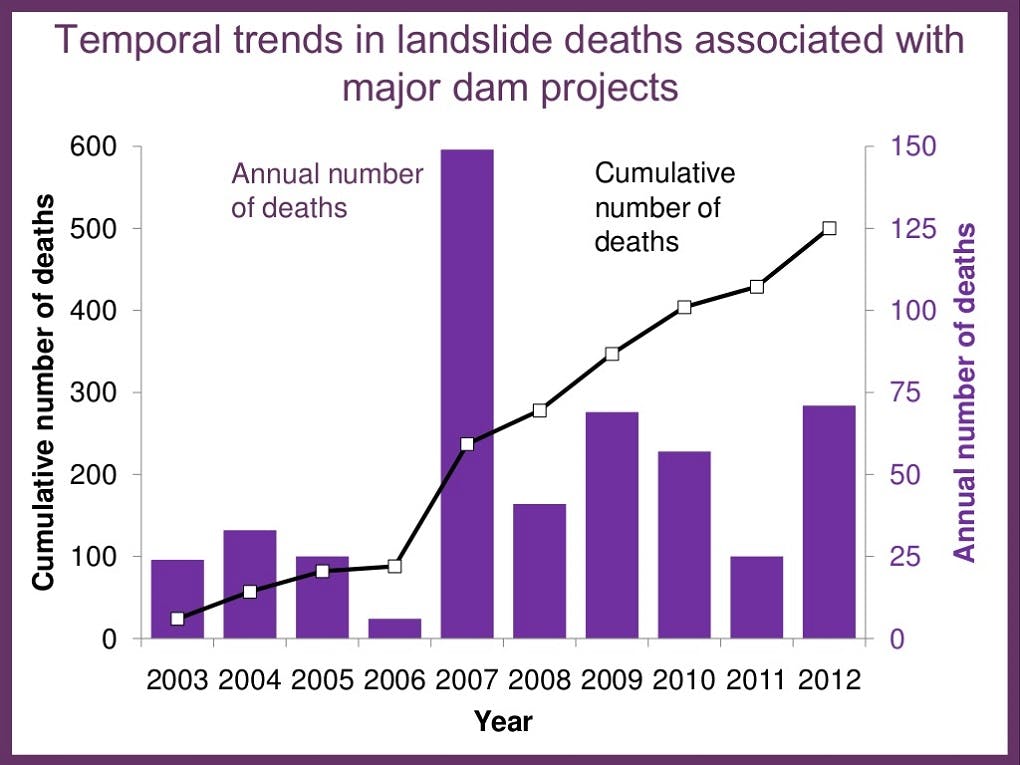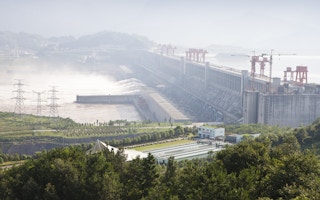Thirty four construction workers were killed after a torrent of mud and rocks tore through a hydropower dam site on May 8 in Taining county in China’s south-east Fujian province. The landslide was believed to have been triggered by heavy rain.
Most workers were asleep when 10,000 cubic metres of mud and rock engulfed their riverside camp early morning, according to Chinese news agency Xinhua.
The country’s President Xi Jinping called for “maximum efforts” to save the missing men, as more than 600 rescuers gathered at the scene, using sniffer dogs, specialist equipment and heavy excavator vehicles.
This kind of disaster is all too familiar and highlights the unacceptably high level of landslides associated with the development of hydropower in China and India, Dave Petley, an academic at the University of East Anglia and one of the world’s leading authorities on landslides, wrote on his blog in the aftermath of the event.
Xi Jinping has spoken out and “urged strengthening local monitoring and safety checks for hidden dangers to prevent secondary disasters”. But as Petley points out: “this has been stated many times previously to little obvious effect…. sadly the pattern has continued.”
Petley has long warned of the risks of the growing trend of building large dams in unstable mountain regions of China and the Himalayas.

Source: Dave Petley
He has tracked the global losses from landslides associated with dams and reservoirs worldwide. From 2003 to 2012, 500 lives have been lost in 37 separate events, almost all of these landslides in East and South Asia, with the majority affecting India and China.
Historically large dams have been built in upland areas where the risks of landslides are relatively low. But now the steep valleys of the Himalayas — spanning China, Nepal, Bhutan and northern India — are slated to become the global centre for large scale dam building in the next two decades.
If all the projects planned by countries in this region are built the Himalayas will have the highest dam density in the world.
This region is also the largest global hotspot for landslide events and earthquakes; the mountains were created by the collision of the Indian and Eurasian plates and are still rising
“
Landslides associated with these projects have the potential to continue to generate substantial human and economic losses unless improvements are put in place to reduce the occurrence of landslides at and around the dam construction sites.
Dave Petley, University of East Anglia
The devastating earthquake that struck Nepal in April last year was only the latest warning sign of the immense vulnerability of large infrastructure and people living in this geologically fragile region.
In his paper warning of the risks in the Himalayas Petley writes: “Landslides associated with these projects have the potential to continue to generate substantial human and economic losses unless improvements are put in place to reduce the occurrence of landslides at and around the dam construction sites.”
“In the areas in question, it is also likely that changes to weather patterns associated with climate change, and in particular increases in peak rainfall intensity, will change patterns of landslide activity. At least some of these sites are also likely to be affected by earthquakes, which generate large numbers of landslides, during their design life.”

Source: Dave Petley
Learning from history
The worst dam-associated disaster in history, writes Petley, was the massive the landslide at the Vajont reservoir dam in the Dolomites of northern Italy in 1963, which washed away 2,500 people and an entire town leaving a barren wasteland of boulders.

Source: Dave Petley
Since then, the dam industry has in general been successful at preventing recurrence of this type of accident; however landslides continue to be a major issue.
Particularly during the planning phase, project developers fail to recognise ancient landslides or identify potential new landslides. This means the cost and construction time of dams are far higher than expected and a number of landslide accidents occur during construction.
China’s Three Gorges dam — the world’s longest at 2,335 metres — has been another major source of destruction.
The Qianjiangping landslide, which occurred during the first impoundment of the reservoir in July 2003, killed 24 people. Hundreds of other landslides and mudslides have been documented along the banks of reservoir as the water levels have risen, leading to the relocation of an additional 100,000 people.
In total 1.4 million people have been moved to make way for the dam.
Most of these events take places during the heavy rainfall of monsoon months.
In recent weeks, China’s south-east has been hit by heavy rainstorms and the situation is expected to get far worse. Last month China warned that the area along the Yangtze River was this year likely to experience its worst flooding since the late 1990s when up to 4,000 people died.
Authorities have blamed an unusually strong El Niño weather pattern for bringing the potential threat of devastating floods this year.










